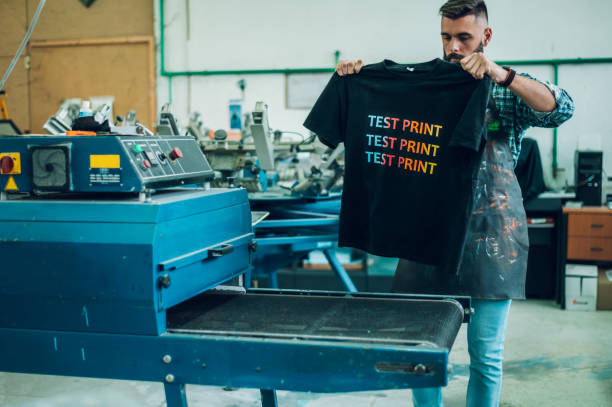Screen printing and digital printing can be used to create a custom t-shirt. As opposed to digital printing, which relies upon computers and printers to create custom t-shirts, screen printing is a labor-intensive process. Prints R Us Print Shop give screen printing of high quality.
Why should you choose screen-printed t-shirts?
Screen printing has several advantages. It tends to work best with just one or two colors due to the nature of the process. The ink used in digital printing soaks into the t-shirt, whereas the ink used in screen printing lays on top of the shirt and feels softer when touched.
Moreover, screen printing is an affordable method of ordering large quantities of t-shirts. The only downside is that it can take a few extra days for the order to be created. Learn how screen-printed shirts are created so you can appreciate that super cool custom t-shirt you just ordered!
How does screen printing work?
Screen printing, also known as silk screening, is a manual process for creating custom t-shirts. This method involves placing a silkscreen over a t-shirt. A brightly colored ink is then dragged across the shirt to create the design.
A professional t-shirt company, such as SportDecals.com, can perform this task with the best results. A large batch of custom t-shirts can be turned out in no time because we have the experience and know-how, along with specialized equipment.
We’re going to show you how to screen print a custom t-shirt right now!
Color Mixing Process
Here’s where your t-shirts come to life. Using special inks and mix them together until you get the exact colors you want. High-quality inks are designed to last for a very long time. Furthermore, they’re very thick, so the design will visually “pop” in terms of color and thickness. The silk-screening process begins after our color laboratory has finished mixing and matching.
Pressing
To create your order, you can use a large metal tool called a press. There are several hundred pounds of weight inside, and it is circular in shape. The wooden silk-screen is placed on 12 “arms” that have a flat area. In a one-person assembly line, after one shirt is made, the wheel is turned, and the next blank t-shirt is silk-screened.
Then, they lower the screens onto each t-shirt. A 2-foot long rubber squeegee (similar to the ones you see at the gas station) is then used to quickly move the ink from one end of the shirt to the other after the custom ink is poured on it.
Ink will soak up into the design area as it moves over the screen. As a result, you get an amazing custom t-shirt!
Drying
Following ink application, the shirt is placed on a conveyor that runs it under a heat source. As a result, the ink instantly dries and becomes permanently embedded in the shirt. Toward the end of the production line stands our eagle-eyed inspector. He or she checks every shirt to make sure it looks exactly like the mock-up we sent you previously.
When there is even the slightest mistake, the inspector hits the bright red “REJECT!” button, and alarm bells start to ring as they pull the shirt out of the order and tell our production crew to make one more.
Custom Silk-Screened T-Shirts Available
Team names, t-shirts with text, and company logos are best suited for silk screening. Despite being raised, the ink feels and looks high-quality.








